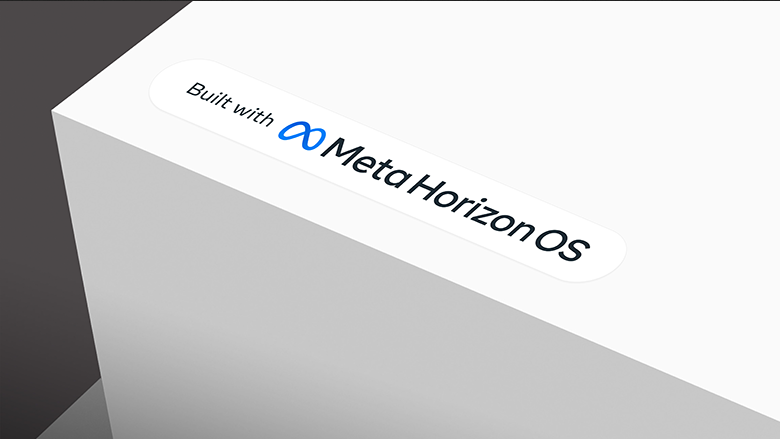
Meta Opens Mixed Reality System Horizon OS to Third Parties
On April 22, Meta published a blog post opening up the operating system that runs on its Meta Quest devices to third-party hardware makers, naming it Meta Horizon OS. Meta says that developers and creators will have access to the custom frameworks and tools they’ve built to create mixed reality experiences. At the same time, the Meta Quest Store app store has been renamed the Meta Horizon Store, and the Horizon social layer currently used by Meta Quest devices will be extended to the full ecosystem. Currently, ASUS ROG is developing a gaming headset based on Horizon OS, Lenovo is developing a mixed reality device for productivity, learning and entertainment, and Xbox is working with Meta on a limited version of the Meta Quest. In addition, Meta will merge the Meta Horizon Store, which is a store for established apps, with the App Lab, which is open to a wide range of developers, to create a more open app landscape. Meta will also integrate the Meta Horizon Store for established apps with the App Lab for developers to create a more open app ecosystem.
Microsoft launches VASA-1 AI framework
YooSecurity reported that Microsoft announced on April 21 a VASA-1 framework for graph-generated video, an AI framework that generates accurate and lifelike lip-synced video (generating a video that reads from a script) using only a portrait photo of a real person and a piece of personal voice audio. According to Microsoft, the VASA-1 framework overcomes the limitations of previous facial generation techniques, as the researchers utilized the Diffusion Transformer model, trained in overall facial dynamics and head movements, which treats all possible facial dynamics, including lip movements, expressions, eye gaze and blinking behaviors as a single latent variable (i.e., generating the entire face with a high level of detail at once), and is able to instantly generate a face with a high level of detail. (i.e., generating the entire highly detailed face at once), and is capable of instantly generating 512 × 512 resolution, 40 FPS video. Microsoft also utilizes 3D technology to assist in labeling facial features and has additionally designed a loss function that enables VASA-1 to not only generate high-quality facial video, but also to effectively capture and reproduce facial 3D structures.
Samsung India Launches Free Screen Replacement Policy for S21 & S22 Phones
Bright lines (green lines running horizontally or vertically across the screen) have been reported on Samsung phones since last year, and more recently the Galaxy S21 and S22 series have been experiencing a high percentage of bright lines following the push of an update to the phone’s system, and this has been particularly noticeable in the Indian market. Last week, Samsung India formally responded to the problem by replacing the screens of Galaxy S21 and S22 users free of charge. According to relevant professionals speculate that the bright line problem may be due to the system update when the device temperature is too high, resulting in the display of the relevant wiring solder joints fall off leading to the occurrence of the problem, and India is located in the South Asian region, its own climatic environment is mainly high temperature and high humidity, compared with other regions is more severe, which contributes to the occurrence of the problem.
Apple Recycling Robots Dave and Taz Arrive in China
On April 22, 2012, Yue Ge, Apple’s Managing Director for Greater China, announced that Dave and Taz, Apple’s recycling robots, have arrived in China. In the spirit of Earth Day, we’re working with our partners to ensure that we maximize the potential of recycled materials, reduce our environmental impact, and protect our planet,” she said. According to previous media reports, the Dave robot is capable of disassembling the Taptic Engine, the iPhone’s touch engine, to better recycle core materials such as rare earth magnets and tungsten. It is also capable of recycling steel materials.Taz is a machine that utilizes a shredder-like function and is able to use new technology to separate magnets from audio modules and recycle more rare earth elements.
Medium Bans Paid Articles
Medium, an overseas writing platform, issued a press release on April 21st announcing that it will ban paid content generated entirely by AI starting May 1st. Medium says it is a platform for human storytelling, not for AI writing machines, and that while AI can help some people to write more clearly or assist creators to write content in their own rudimentary second language, it is not desirable for content to be written entirely by AI. While AI can help some people write more clearly, or assist creators in writing content in their rusty second language, content written entirely by AI is not desirable. If an author continues to publish paid content generated by AI after May 1, users have the right to report it and the author will be removed from publishing paid articles. As for non-paid content, Medium also discourages the publication of content generated entirely by AI, which will be recognized by bots and banned from the front page.
At the recent CadenceLIVE Silicon Valley 2024 conference, NVIDIA CEO Jen-Hsun Huang predicted that humanoid robots may become mass-market as well as mainstream robotic products, and that the overall manufacturing cost will be much lower than what the public expects today.